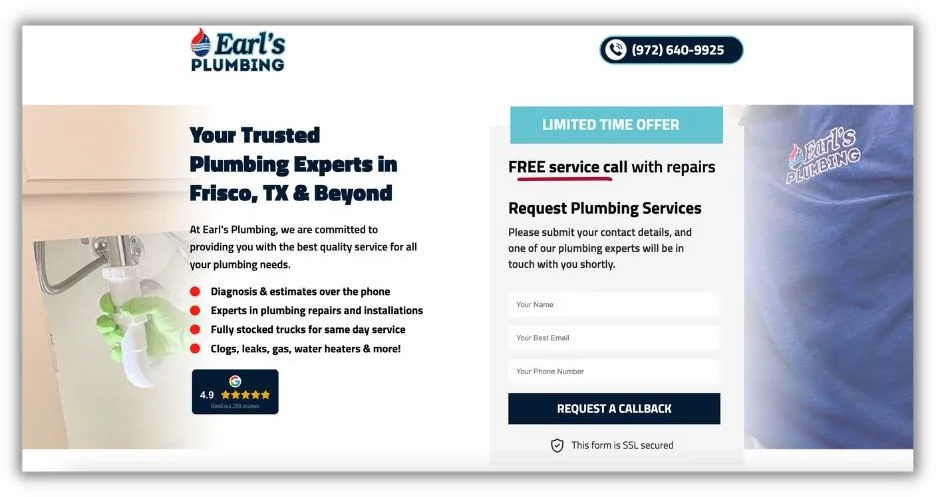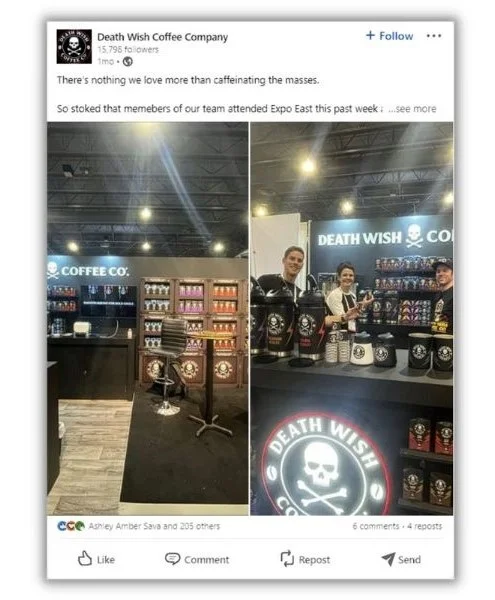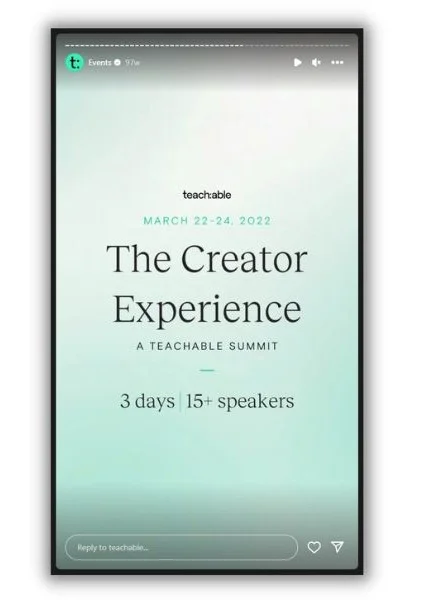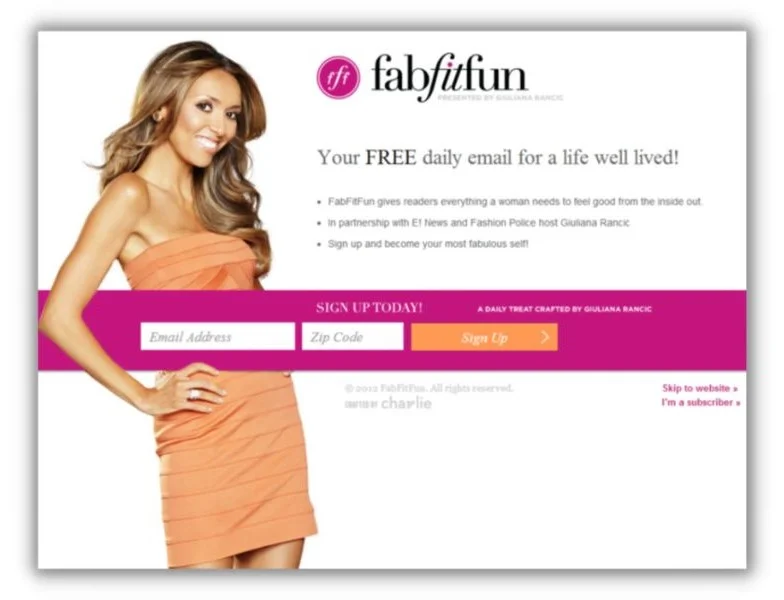Capturing the information of potential customers is more than just a data collection exercise, it’s about securing future business opportunities. An effective lead capture strategy can significantly impact a company’s bottom line. By creating a steady flow of quality leads, businesses can drive revenue, foster growth, and solidify their position in the market.
When done right, lead capture not only fills the sales funnel but also provides clarity on which leads have the highest propensity to convert. With this guide, you’ll create a lead capture system that turns more visitors from “just looking” to “just bought.”
Table of contents
- What is lead capture?
- How to create a lead capture system
- 5 magnetic lead capture examples
- How technology is changing lead capture strategies
✋ Lead capture only works if you’re filling the funnel with new prospects. Our free Website Grader checks your website, social media presence, and digital advertising to make sure you’re getting more people to your lead capture devices.
What is lead capture?
Lead capture is the system you use to gather contact information from prospects who are interested in your business as part of your lead-generation process. Typical information you’ll collect includes an email address, name, or phone number. But it could also be social media handles or physical addresses.
Once you’ve collected someone’s information, you don’t have to rely on them returning to your website. That person is now a lead you can nurture with valuable content and offers.
IRL, lead capture could mean asking people to sign in for a free event you’ve hosted. In the online realm, you’ll use digital lead capture forms to gather information.

Popups are a common lead capture device.
How to create a lead capture system
Highly effective lead capture systems increase ROI, streamline the sales process, and help you achieve sustainable business growth. Use these steps to move your prospects from the top of the funnel to the stage where they are ready to buy your products.
Align your offer with expectations
Your lead magnet is the thing of value you offer in exchange for a lead’s personal information. While you want to present an irresistible offer, you have to make sure and deliver on your promise.
When there’s a clear alignment between what a visitor expects and what you deliver, the likelihood of engagement and positive interaction increases. For example, if a user signs up expecting a weekly industry insights newsletter, but instead receives daily promotional emails, they may feel deceived and unsubscribe.
To avoid such pitfalls, clearly communicate your value proposition. If you’re offering a newsletter, be transparent about its frequency and content. If it is gated content, explain that you may send the occasional promotional email to the user once they have subscribed. Always set the right expectations and consistently meet or exceed them to build a loyal and engaged subscriber base.
Check out this “quilt-pro-quo” from the Brooklyn Craft Company.

If there’s a motto for all lead capture strategies, it’s to show clear value.
Just register on their website and get 10% off your next order. It’s a clear value customers can see.
Design engaging landing pages
Landing pages are a critical part of your lead capture system. When a user clicks on a promotional ad, a social media post, or a search result, they come to your page with a specific expectation. If the landing page fails to meet this expectation or is not engaging, it can lead to high bounce rates.
A high bounce rate indicates lost lead opportunities and adversely affects search engine rankings. Moreover, misaligned content can erode trust, making it even harder to engage that user in the future. By crafting landing pages that are both visually appealing and aligned with the user’s expectations, businesses can significantly improve their chances of converting casual visitors into valuable leads.
When designing a landing page, focus on the user journey. Think of what the user is looking for and the problem they are trying to solve and address that intent through every element on the page.
This landing page from Earl’s Plumbing is optimized to capture plenty of leads.

Your landing page is like the net for lead capture devices.
The landing page has a clear and time-sensitive call to action and plenty of social proof to give visitors confidence in the company.
Adapt your strategy to the platform
Different platforms come with their own unique user behaviors, algorithms, and ad formats. That’s why the same strategy that works on one platform may not work on another. Adapting your lead capture strategy to fit the nuances of each platform will help you reach your target audience effectively.
To adapt your strategy, begin by understanding the primary demographics and behaviors associated with each platform. For example, LinkedIn caters more to B2B and professional audiences, while TikTok leans towards younger demographics. So a campaign with the same visuals and messaging won’t work for both platforms.
Take a page out of Death Wish Coffee’s book. They sell coffee, but their posts on LinkedIn are completely different from what they post on Instagram. On LinkedIn, their posts are about winning awards and attending expos.

The buttoned-up version of Death Wish Coffee is the perfect fit for LinkedIn.
While over on Instagram, the DWC team lets out their creative side.

Death Wish Coffee’s Instagram account is full of funny content.
📣 Learn how you can be like Death Wish Coffee and generate lots of new sales online with this free list of ways to increase traffic to your website.
Continuously test, monitor, and adjust
By testing, monitoring, and adjusting your lead capture strategy based on the latest data, you proactively maximize your ability to generate leads. A/B test different elements–from landing pages to chatbot messaging–you can identify what resonates most with your target audience and what doesn’t.
Start with setting clear, measurable objectives for your lead capture strategies. This will provide a baseline to assess your A/B tests against. Test one element at a time to ensure you can accurately attribute changes in performance to specific tweaks. Once a test concludes, analyze the results, implement the winning changes, and repeat.
5 lead capture examples
Modern audiences spot sales tactics fast. They switch off if they feel they’re being sold to. This makes getting leads harder than before. To succeed, brands need fresh, clear strategies. Here are five lead capture examples that will help you generate more leads.
1. Webinars, podcasts and online workshops
Live events like webinars and workshops offer value, knowledge, and real-time engagement. They allow you to showcase expertise and build trust. Don’t just take our word for it. 51% of marketers believe that webinars/webcasts/web series produce the best results, and 55% say that Sales prioritizes leads from webinars.
Here’s what you have to do to capture leads through live events:
- Host live sessions on topics relevant to your audience.
- Promote your events across your digital channels.
- Collect attendee details through sign-up forms.
- Make sure the attendees have a seamless experience from registration to the conclusion of the event.
Teachable is a prime example of a successful lead capture strategy through webinars and video content. In the early stages of their growth, Teachable held webinars to demonstrate how easy it was to create and sell courses using their platform. These webinars were packed with actionable advice for educators and entrepreneurs. The dual benefit here was that Teachable was capturing leads and educating them in using their product.

Teachable uses a variety of webinars and online conferences to generate leads.
2. Quizzes and surveys
Interactive content is engaging and yields insights into your audience’s preferences and pain points. Quizzes and surveys entertain users while simultaneously acting as a tool for lead generation. In fact, 76% of people would gladly fill out a short survey when they visit your website for the first time, because they expect you to personalize their experiences.
Here’s what to do to capture leads through quizzes and surveys:
- Create quizzes or surveys that are relevant to your audience.
- Make sure they’re short, fun, and provide immediate value, such as personalized recommendations or insights.
- Make sure you explain why you want to collect their contact details and how you will use it.
Best Friends Animal Society in Utah uses quizzes to connect people and pets. Their “sanctuary soulmate” quiz matches folks with animals they can sponsor. Some quizzes skip email sign-ups but push for sharing on social media. These short quizzes boost their visibility and grow their email list.

Quizzes are a fun way to turn visitors into new leads.
3. Exclusive content access
People are more likely to share their information when they perceive they’re getting something of significant value in return, such as expert insights, tips, or premium resources. 60% of marketers report successful lead generation thanks to content marketing and exclusive content offers.
To use this strategy:
- Create high-value content assets such as videos, whitepapers, survey results, and studies, and make them available to your users after they sign up to receive them.
- Make sure the promise of value is clear and that the process of accessing this content is hassle-free.
FabFitFun has a fantastic funnel for capturing leads.

When content is your lead capture offer, give visitors lots of reasons to sign up.
Notice how the brand leads with the value of their offer and tells you how your life will be different if you register. That specificity is the key to generating leads with content.
4. Exit-intent pop-ups
Just as a visitor decides to leave your website, grabbing their attention with a timely offer can convert a potential exit into a valuable lead. Exit-intent pop-ups serve as a last-ditch effort to capture a lead that might have otherwise been lost. Top-performing popups have a conversion rate of up to 10%, so you can turn a lot of your traffic into leads just through a well-placed popup.
Here’s what you can do to get the most out of your exit-intent pop-ups:
- Design your pop-ups to be visually appealing and make the offer large and visible. They have already decided to leave, so your popup should really be eye-catching enough to make them stay a few seconds longer and fill out that form.
- The offer, whether it’s a discount or exclusive content should be irresistible. An eBook that only consists of publicly available information might not cut it.
While many websites use exit-intent popups, The Beard Club does it really well.

If you’re going to ask for more information like a phone number, make sure your lead capture offer is really high value.
The brand offers a 35% discount in their exit-intent popup and asks for your email address and phone number to give you that discount. The popup stands out, it has a loud and clear message, and you know exactly what you are signing up for—all the ingredients that make for a successful popup.
5. Chatbots
Chatbots offer a personalized, interactive user experience, guiding visitors and answering queries in real time. They’re like virtual sales assistants, engaging potential leads, and gathering information efficiently. That is why 55% of marketers use chatbots for lead generation. Here’s how you can do the same:
- Implement a chatbot that understands user intent.
- Make sure it’s programmed to ask the right questions, provide immediate value, and transition smoothly to a human representative if needed.
HipLink uses a chatbot to move prospects that visit the website through its sales funnel.

Address visitors at each stage of their buying journey with your lead capture chatbot.
Notice how there’s an option to learn more and one that goes to right to sales. That’s a great way to capture leads at different times during their decision-making process.
How technology is changing lead capture strategies
While the best practices and ideas we discussed in this article will help you capture leads today, the latest technologies, especially generative AI, is changing the way lead generation will work in the future:
AI
AI is not just refining chatbot interactions, it is being used to predict user behavior, allowing marketers to create hyper-personalized lead capture strategies. This technology is becoming more accessible so expect to see its adoption grow. Keep an eye on the use of AI for lead generation in your industry.
Smart devices
With the increasing popularity of smart speakers and voice-activated devices, it’s worth exploring how voice search can play a role in lead generation. Think about how your content and offers can be optimized for this medium.
Immersive content
Beyond quizzes and surveys, interactive infographics, calculators, and immersive VR experiences can become powerful tools for lead capture in the future. These formats engage users deeply, making them more likely to share their information. See if VR is worth exploring for your business.
Create your own lead capture system today
The key to successful lead capture isn’t just about implementing the right strategies today but adapting and innovating for the demands of tomorrow. Stay curious, test new approaches, and always prioritize the value you offer to your potential leads.
Here are the top lead capture examples and ideas to model after:
- Webinars, podcasts, online workshops
- Quizzes and surveys
- Exclusive content access
- Exit intent popups
- Chatbots






